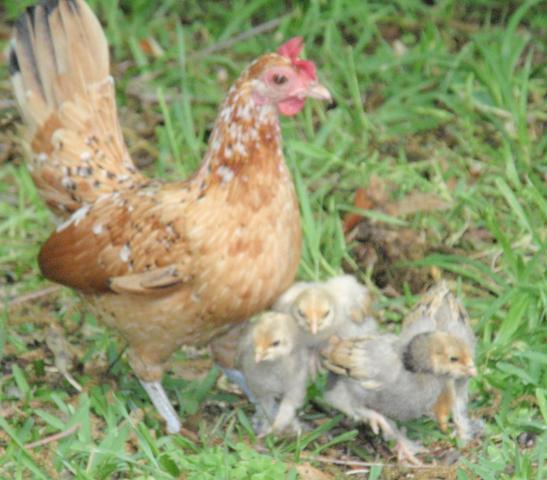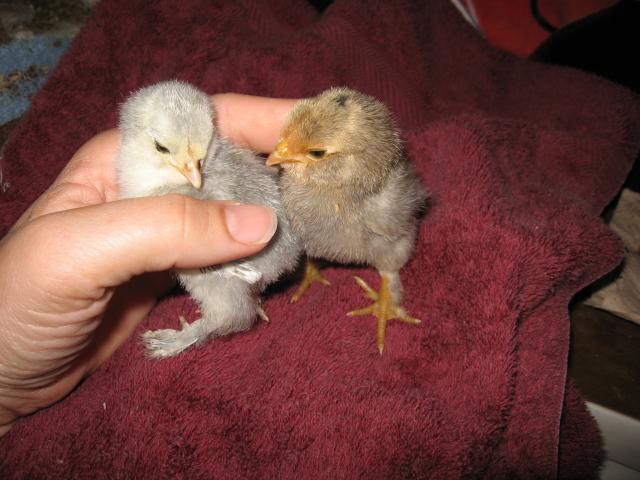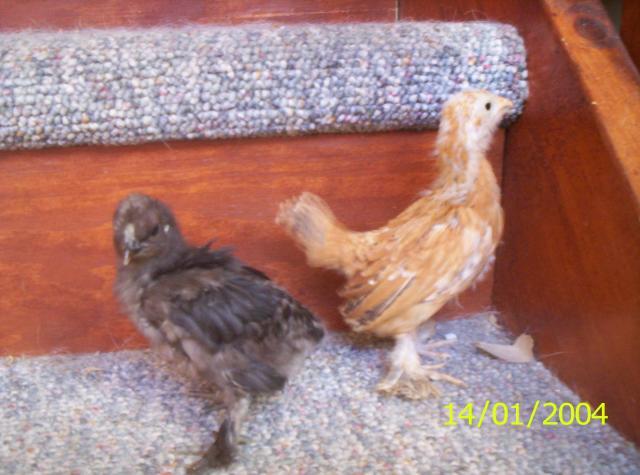Quote:
Yes! You should see how she looks trying to cover all five of them even now, spread out like a pancake! One morning I noticed it looked like she had five heads on her back. It was all of the chicks snuggling in her wing pits and poking up their heads to have a look around.
She's my smallest hen, too. She was just about a pound when she started brooding, and she lost 20 percent of her body weight while setting (although she's gaining it back fast now). I intended for my largest hen to incubate the d'Uccle eggs, but she went broody a week before those eggs became available, while this little hen went broody at just the right time.
I have been known to swap eggs from under a hen so that she's sitting on the eggs I want her to be sitting on. Some hens, the ones that eat and drink each day when setting, are better for this. They don't care to sit 4 weeks as long as there are chicks in the end.
I have one hen that I have to make take a break. She my buff mottled (aka GN) hen, and she's skin & bone. She's one I would never switch eggs on! Luckily her 3 weeks are almost up with this batch.
I have 6 d'Uccle hens setting nests, one raising chicks, and one wondering, "Where'd everybody go??" I suspect she'll get bitten by the broody bug pretty soon....





